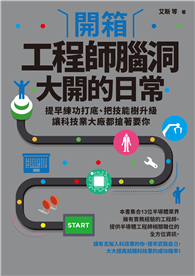The Unfinished Work Week: Lost Personal TimeThierry Breten CEO of ATOS, a French information technology company with 80,000 employees in 42 countries, stated, "We are producing data on a massive scale that is fast polluting our working environments and also encroaching into our personal lives."Today’s work environment has resulted in minimum head counts and larger workloads. Most of all, it has become expected for personal time on evenings and weekends be used to complete unfinished projects. The theory of do more with less has permeated throughout the corporate universe.This theory has its drawbacks. In 2005 Microsoft Information Worker Product Management Group commissioned an independent survey that helped participants assess their own productivity and receive tips on improving their work habits. Listed below are the results of the survey which involved 38,000 workers in 200 countries.a) 37% of the work week is unproductive or wastedb) Unclear objectivesc) Lack of team communicationd) Ineffective meetingse) Unclear prioritiesTwo areas in need of improvement stand out:1) the amount of unproductive work time; and 2) the reasons for the non-productivity. Much of the wasted time necessitates extra interaction for the audience to remember the message originally presented. This repeated action costs companies thousands of dollars of employees’ time. In order to eliminate the need for redundancy, a memorable conversation must be held. For this to happen, a person must understand how the memory works. If one thinks giving information orally or written is easily retained by the recipient, consider the following list of facts. Each one is fighting for the attention of the audience. Fact: The average daily number of emails per person, per day is 115. Fact: Over 50% percent of a work day is spent managing email. Fact: 50% of the 30 million PowerPoint Presentations given per day are considered a waste of time.Fact: The cost of poor PowerPoint Presentations is over $450,000 per day for a company with a minimum of 250 employees. Fact: The brain has the capacity to remember only 8 items of information in an hour. The events listed above cannot be eliminated. However, you can learn to use these tools more effectively by meeting one requirement: 86% of what is remembered is seen. Effective visual interaction is the key to performance efficiencies and the ratio between working and personal time. What is available to reduce the strain and stress of everyday personal and business lives? Look no further than your computer and smart phone. Technology has changed the manner of communication from verbal to a visual-based process. Text messages, Emails and PowerPoint presentations have replaced phone calls and teleconferences. Communication efficiency is measured by what information is remembered during the first exposure.It is evident the solution to increasing the productive work week is to apply the rules of the visual memory process with the technological advances in the communication methods. Throughout the primary and secondary education processes, verbal communication was emphasized at the expense of visual interaction. So, now you can see the dilemma: in order to lower the non-productive work rate, you must learn how to have efficient and effective visual communication.This journey will take you to the scientific reasons why visual, not verbal, communication is most effective. Then seven basic rules of effective conversation will be discussed and proven. Finally, we will use these rules in creating examples of memorable text messages, Emails, webinars, PowerPoint presentations, and face-to-face meetings, including virtual conversations.Isn’t it is time to use personal time to enjoy life rather than trying to catch up on unfinished work?












